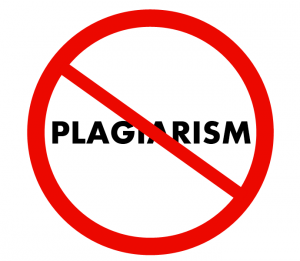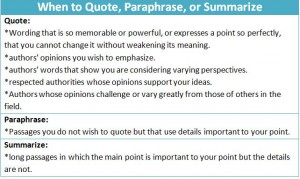Chances are, you know not to copy and paste articles from the internet and try to pass them off as your own writing. However, plagiarism can happen accidentally through neglect rather than intent when you’re writing. Even if you’ve done it accidentally, the end result is still the same – you’ve plagiarized.
What’s the best way to avoid plagiarism? Give credit to other people’s ideas and words when they did not come directly from your own brain. The Everyday Writer has additional information about how to integrate your sources and avoid plagiarism starting on page 181 of the sixth edition.
There are three ways you can avoid plagiarism: quote, paraphrase, summarize.
If you’re still not clear on the differences between the three ways of referencing material, the Online Writing Lab (OWL) at Purdue University is an excellent resource for all things related to writing. When do you cite a source? Anytime the words you have written are not your own analysis you should cite your source. In contrast, if you are stating a fact that is such common knowledge that 10/10 random strangers on the street would tell you this, you probably don’t need to cite a source. An example would be, “Abraham Lincoln was president during the Civil War”.
Paraphrased and summarized passages are shorter than their original source material with summaries being significantly shorter. For practice paraphrasing and summarizing, check the OWL at Purdue website for additional help.
The three most common ways of citing your sources are MLA style, APA style and Chicago style. Check your Everyday Writer starting on page 461 (sixth edition) for a rundown on how to use these styles in your papers. Make sure you use the citation style that is required for your particular class. MLA is generally used in English classes, APA is often used in the social sciences, and Chicago most often shows up in history.
These three different styles are not difficult to use, but you must pay attention to detail. Each capital letter and punctuation mark has a specific spot when you’re looking at citations and works cited/bibliographies. Don’t lose points on an assignment simply due to a misplaced period.
Now that you understand when to cite your sources, see subsequent posts about how best to integrate quotations in to your paper.


